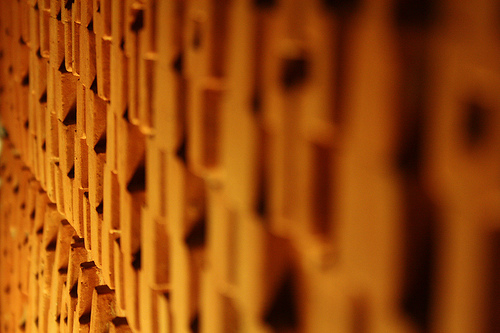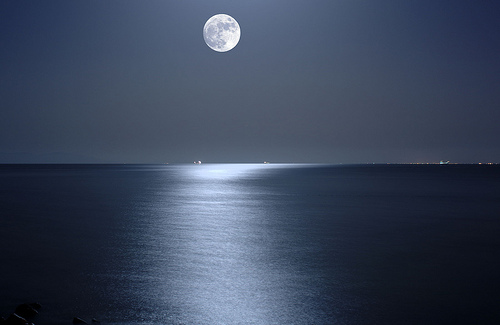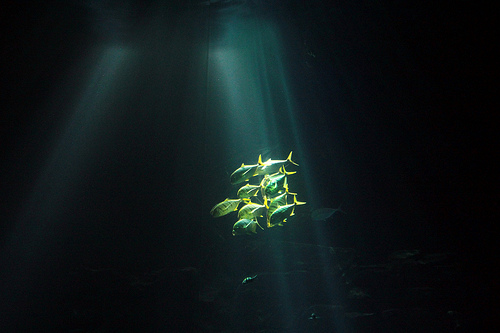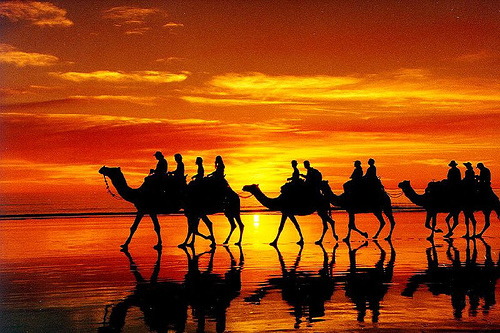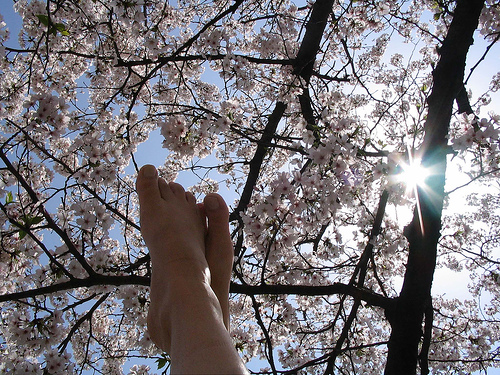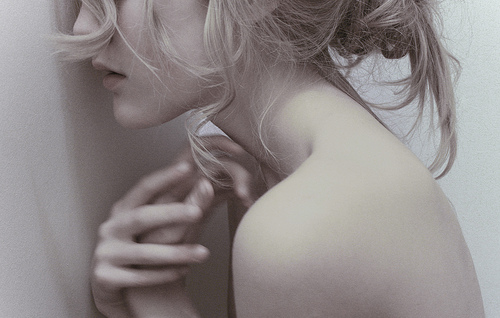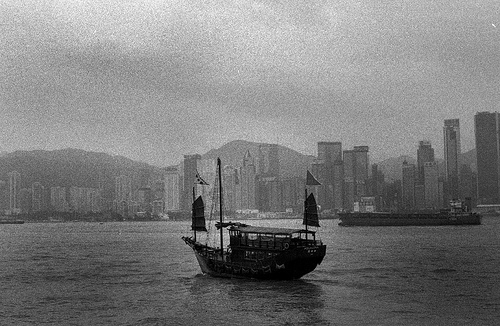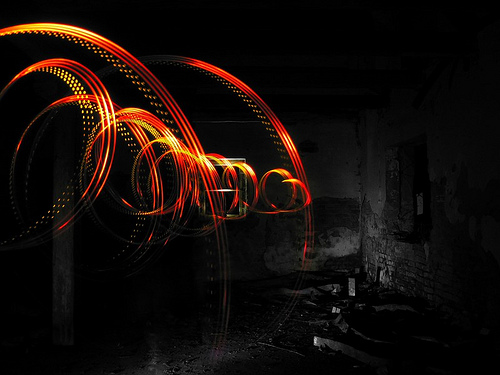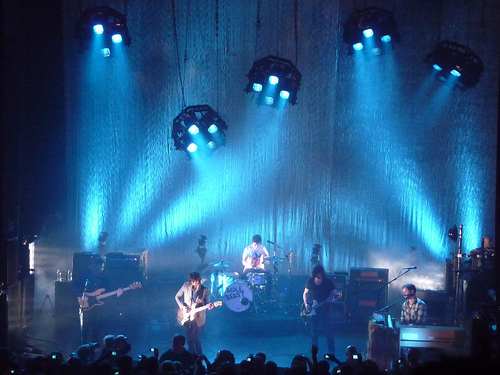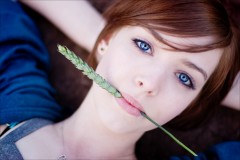
Light has always been, and will always be the prime element in photography. In fact, the term “photography” itself comes from the combination of two Greek words— “phos”, meaning light and “graphics”, meaning drawing. To sum up, photography is the art of drawing with light. A photograph can never be right if the light falling on it was wrong, while the shot was being taken. Of course, now we have advanced and use expensive artificial lighting arrangements to compensate for the lighting inaccuracy, but with proper understanding about the attributes of light, you can obtain high quality, professional photo effects even by using basic lighting techniques. Just play with the intensity, direction and quality of light and create eye-catching special effects in your photographs, like a pro. Given here are nine such awesome special effects that you can obtain with basic lighting.
-
Highlighting The Textures
Texture stands out in a photograph and gives a three dimensional element to it. It adds form, strength and details to a photo and thus adding to its expressiveness. As such, you can add texture to your image if you wish to convey power, strength and stability through it. To capture a texture properly, take a shot under hard, angular light. Direct sunlight is the best to shoot vertical surfaced textures as the strong light highlights them and casts strong shadows to provide an additional structure to them. However, if you wish to create a subtle impact, shoot the subject in soft side-light at a low angle and bring out the evenness of the texture along with some of the geometric roughness. The basic trick that lies here is the size and distance of the source and hence the intensity of light. While a smaller source of light tends to create a more detailed texture, a larger source of light softens and evens it.
-
Employing The Light Temperature
The temperature of light determines what color will be dominant from the color spectrum of white light. All sorts of lights have colors depending on the source you use and the temperature that the light has. These colors are responsible for color casts in photographs. For a better understanding of color-cast and color temperature, refer to our article “White Balance — Correct The Color Temperature Of Your Pictures“. For example, when shot under a tungsten light, the photo has an orange color cast, under florescent light, it turns green and when shot under natural day light, the cast turns blue. Also, different times of the day have different amounts and types of light received and hence, different color domination. At dawn and dusk, the light intensity is less, so red color is more dominant— producing softer, warm colored pictures with less contrast. To the contrary, at mid-day, blue color is more in emphasis. While color cast is never desirable for photographers and they get it fixed by adjusting the white balance, you can play with the color casts to create stylish effects in the photographs. For this you can play around with the white-balance in the camera controls or do it as a part of post-processing or use filters for achieving special effects.
-
The Natural Spotlight
Sometimes, a break in the crowd of trees allowing only a portion of the land to be illuminated by the sunlight; or a crack on the roof of an old building allowing some natural light to peep in the dark room, make wonderful, naturally framed pictures. Here, the surrounding dark area acts as a frame and the subject when placed directly under the natural spotlight, attracts a lot of attention. This produces a highly dramatic effect in the photograph. Use natural spotlight to keep your subject in absolute focus and to add a black natural frame to it. While this is just one of the effects achieved by natural lighting, check the article on natural lighting for some useful tips to make the most of natural lighting.
-
Manipulating The Contrast
Contrast is simply the difference between the highlights and shadows. Contrast plays a vital role in bringing out the mood and form in a photograph. But besides enhancing the quality of a photograph, contrast can be played with to give special effect to a photograph. The best example of this is a silhouette image where a strong light is placed behind the subject to illuminate the background but keep the subject underexposed. This highly contrasted setting produces an effect where the subject’s body outline seems to stand out strongly against the background. Sometimes, shooting only the shadow and leaving out the subject can create an interesting picture of an illuminated background with a contrasting black shadow as the subject. Want to learn how to get creative at photographing silhouettes? Check our gallery post on silhouette photography for interesting silhouette photographs.
-
Creating Sun-Stars And Ghost Effects
You can adjust and experiment with your camera setting and use lighting to obtain high class dramatic, special effects with very less effort. For example, if you use a wide angle lens and shoot with a small aperture casting sun into the camera lens, most of the sunlight will be diffracted back creating numerous beams around the sun, giving it the effect of a star. If the sun is at an angle you can achieve sun-flares too. You can creatively employ aperture settings for obtaining amazing aperture effects. Another interesting effect of light and camera play is the presence of a semi-transparent subject in a scene, providing the photograph with a ghostly effect. This can be done by shooting at two exposures within a single frame. The trick behind this is that the subject will be absent in one of the exposures. The other exposure has to be long with a low shutter speed and the subject needs to be in motion to create a blurry, ghostly effect.
-
Defining The Form / Contour
Light can be manipulated in various ways to bring out the form of a subject and add to the interest of the photograph. For example, in silhouette photography, the strong and prominent form of the subject against the highly lit background clearly defines its shapely details. In fine-art female photography, if the photographer cannot play effectively with the light available to him, the photograph will look obscene and offensive instead of artistically sculptural, because the contour of the subject will not be clearly evident.
-
Adding The Grain
Noise or grain in a photograph is an effect of using a high ISO and low light. Though grains are never desired by photographers in their photos, sometimes they might provide amazing effects to a photograph. For example, a photograph will have lots of grain in it if taken with a small aperture and a high ISO. Such a photograph will give a raw quality and subtle mood to the photograph, rendering an artistic depth to it and giving it a classy, aged effect like those taken with an old film camera (as old film cameras had a default high ISO setting).
-
Light Painting
You can create amazingly superb lighting effects with light painting as well. The light painting is the art of painting the light emitted by the light source by either moving the camera or the source of light to create beautiful waves of light in the darkened room. It is the photographic technique in which exposures are made at night or in a darkened room by moving a hand-held light source (or by moving the camera) with the camera set at slow shutter speed. The slow shutter speed enables you to capture long exposures. You can additionally set the camera to focus manually as the auto-focus may be tricked by low-light. Aperture also plays a vital role in creating interesting effects with light painting. Smaller apertures such as f/16 or f/22 generate a sharper image and preserve a large depth of field whilst larger aperture which often blurs the light drawn by the light source. You can use flashlights, fiber optic light pens, candles, matchsticks, etc to produce the lighting effect.
-
Streaming The Lights
This technique is highly focused and relevant in context to rock concerts and stage performances. The photographer is challenged with portraying the action in low-light ambiance with artificial lights streaming in from various directions. Well, you need to tune the camera on fully-manual mode and take a lot of pictures to actually capture the shots of performer and lights in action. We will talk more about it in the upcoming post, for now you can check out tips for shooting in low-light / night.

